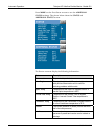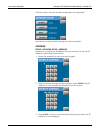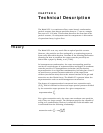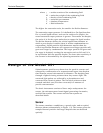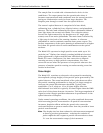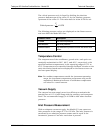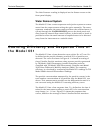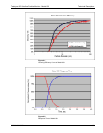
07506C DCN6727 53
CHAPTER 6
Technical Description
The Model 651 is a continuous-flow, water-based, condensation
particle counter that detects particles down to <7 nm at a sample
flow rate of 0.12 L/min. This section describes the function of the
particle counter, its subsystems and its components. A discussion
of operation theory is given first.
Theory
The Model 651 acts very much like an optical particle counter.
However, the particles are first enlarged by a condensing vapor to
form easily detectable droplets. Portions of the following discussion
(focusing on how to condense the vapor onto the particles) are
taken from a paper by Keady, et al. [1986].
In heterogeneous condensation, the vapor surrounding particles
reaches a certain degree of supersaturation and begins to condense
onto the particles. In homogeneous nucleation (self-nucleation),
supersaturation is so high that condensation can take place even if
no particles are present because molecules of the vapor form
clusters (nucleation sites) due to the natural motion of the gas and
attractive van der Waals forces. The Model 651 operates below the
supersaturation ratio to avoid homogeneous nucleation.
The degree of supersaturation is measured as a saturation ratio
(P/P
s
), which is defined as the actual vapor partial-pressure divided
by the saturation vapor pressure for a given temperature:
P
supersaturation =
__
P
s
For a given saturation ratio, the vapor can condense onto particles
only if they are large enough. The minimum particle size capable of
acting as a condensation nucleus is called the Kelvin diameter and
is evaluated from the following relationship:
P (4
M)
saturation ratio =
__
= exp
_____
P
s
RTd




